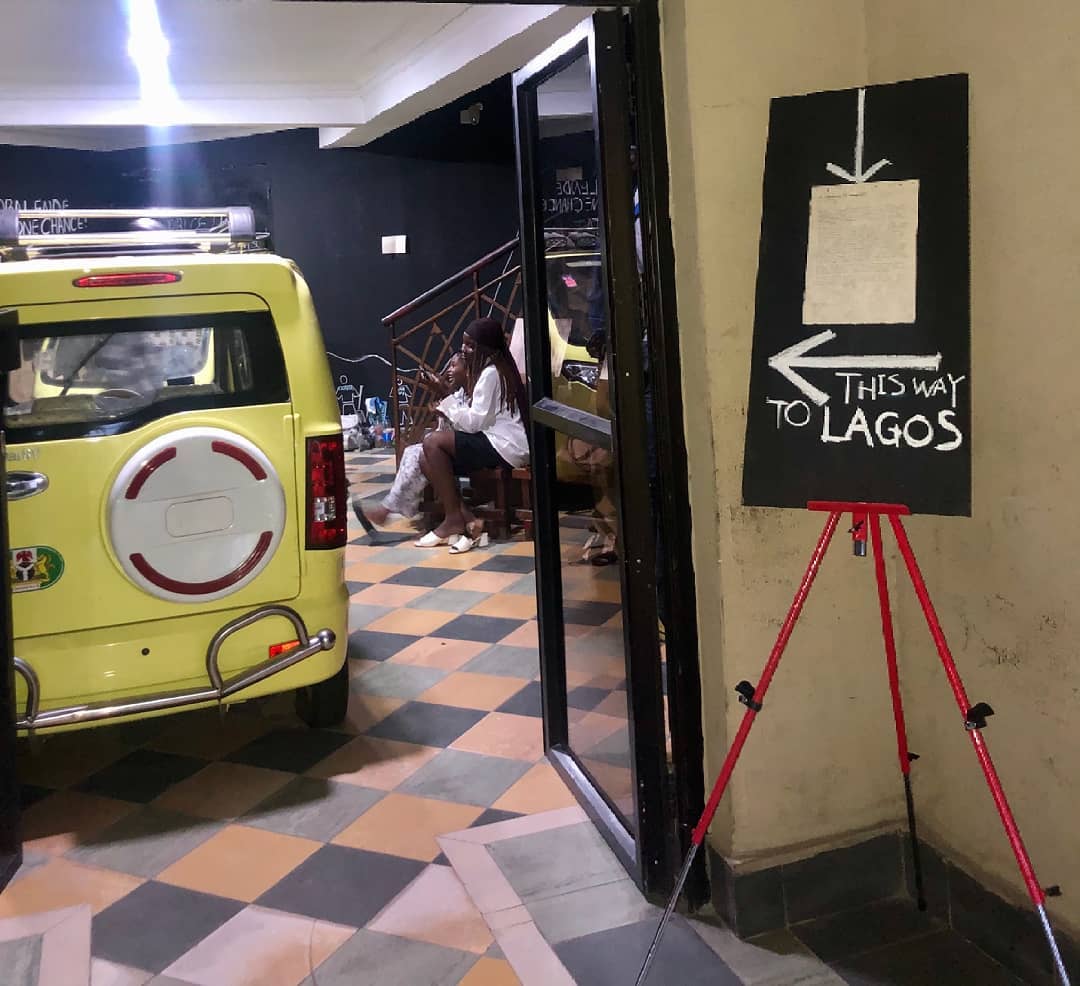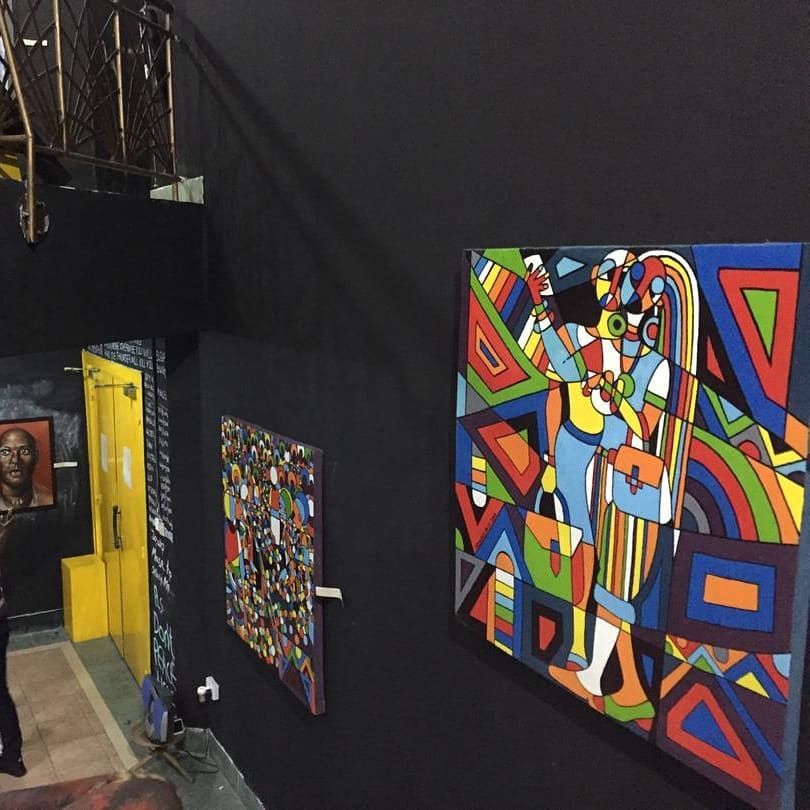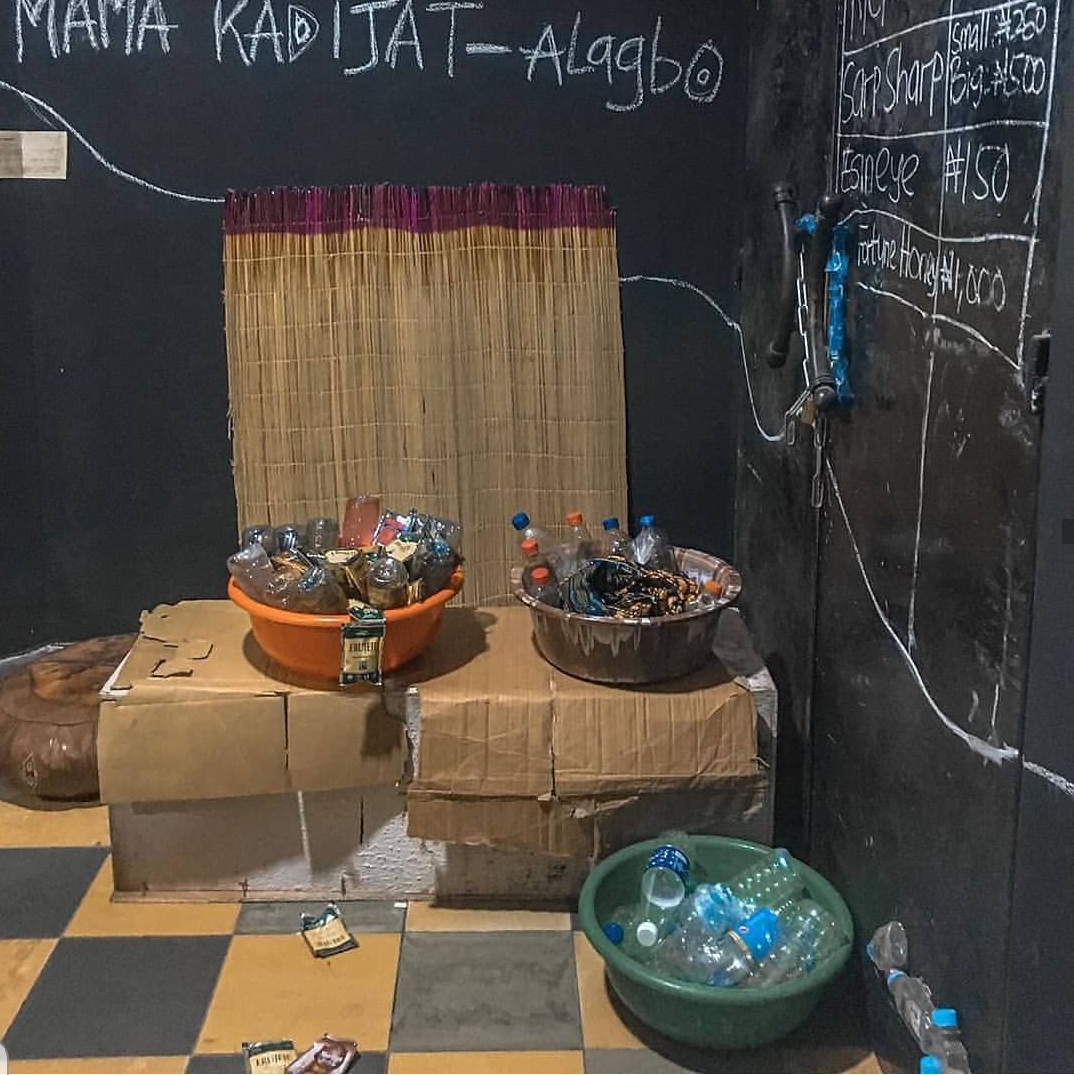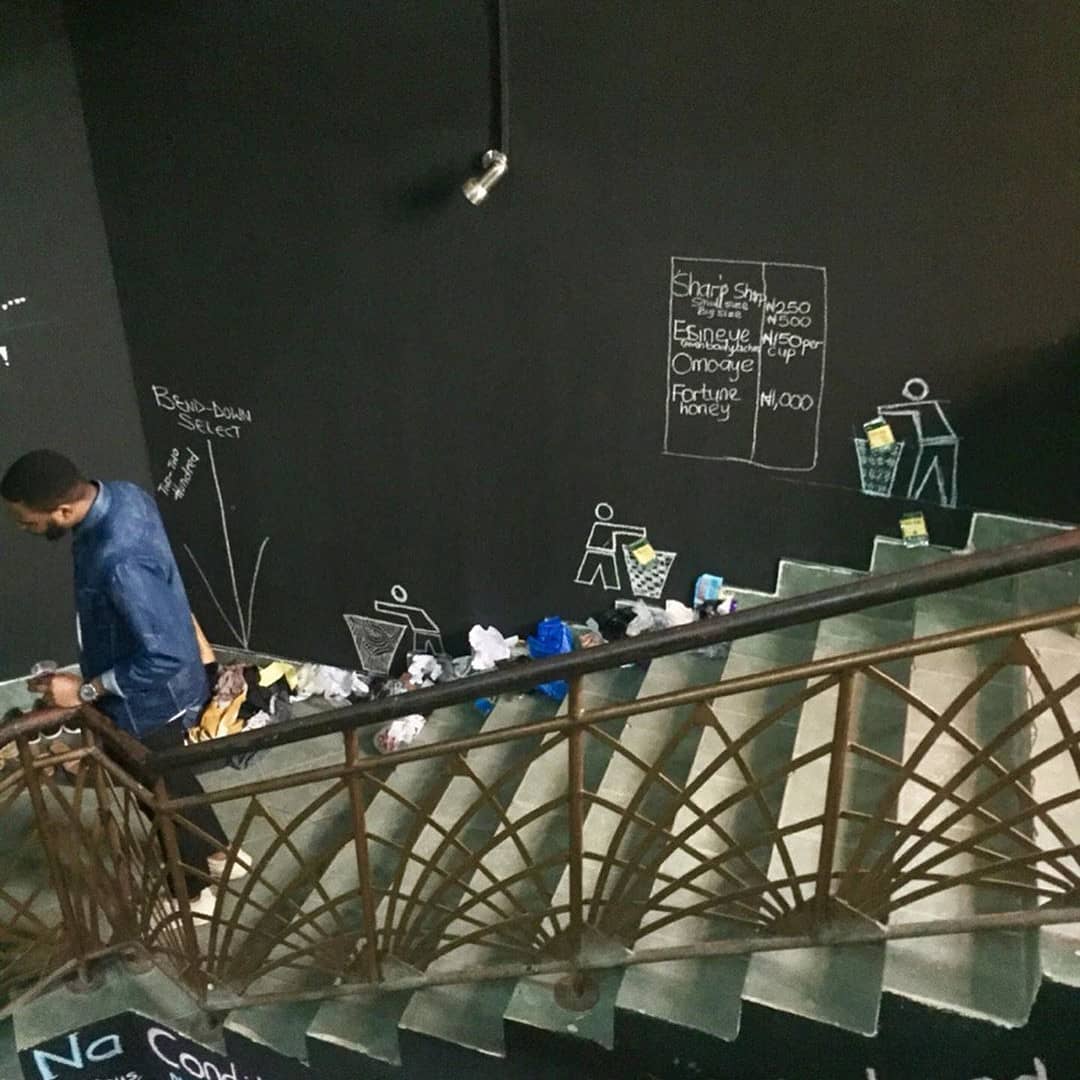Roli O’tsemaye reviews the ongoing exhibition, “No Condition is Permanent” at the Revolving Art Incubator, Victoria Island, Lagos.

If you live or have ever lived in Lagos, you will agree that some of its most striking features are the speed with which the city moves, the teeming population it hosts along with their diversity that extends beyond ethnic divides to include dreams and expectations harboured by its dwellers and the quite unnerving chaos that is unlike most places around the world. Who would think it possible to build such a city off a wall? “No Condition is Permanent”, an ongoing exhibition at the Revolving Art Incubator, Victoria Island, attempts to do this.
Still, it is clever of the artist to capitalize on it, enhancing the audience-experience of the work. All these in combination with the drawings on the wall, of buses, unwinding roads and routes, gives a certain significance one could easily relate to when thinking about movement within Lagos.
The exhibition features mostly installations as well as paintings and drawings by several artists including Babatunde Ogunlade, Kehinde Awofeso, Israel Ophori, Yakubu Paul, Pietrina Aturu, Mfonobong Mkpang, Chidinma Nene, Ifeoluwa Osunkoya, Elizabeth Okafor, Egba Daniel, Byenyan Bitrus, Ekeomah Atuonwu, Moyin Adelaja, Ogochukwu Ejiofor and Ayotola Daini – who were all participants of the Apprenticeship Workshop – one of the programmes under a major project organised by the Revolving Art Incubator titled ‘Extroversion’.
‘Extroversion’ is a project designed to engage with cultural substructures within the city through apprenticeship, experiments and outpost programmes. For its apprenticeship programme which featured various practitioners in the arts including writers, curators, architects, graphic artists, and visual artists, their workshop experience and exercises culminated in this exhibition. “No Condition is Permanent” can be described as a dialogue between the artists and the city, by presenting a journey within and out of Lagos, using the flight of stairs at the Incubator, to serve as a guide for visitors to course through the exhibition.

To achieve this dialogue and presentation, the artists, despite their existing familiarity with the city, had to go on an excursion into Lagos with ‘new eyes’. This enabled them to recognise distinct features which are otherwise overlooked, and then, portrayed in a way that makes a striking impression on the viewer, such that a Lagosian may better understand and further appreciate the city, and a new visitor might find entry points to explore this daunting metropolitan city.
At the entrance, a sign reads “This Way to Lagos” leading the viewer right to an installation titled ‘Danfo Soundscapes’ by Ifeoluwa Osunkoya. Reminiscent of Emeka Ogboh’s Lagos soundscapes, Osunkoya’s work captures the voices of bus conductors in public transport services, calling out bus stops to potential passengers. “Ojuelegba!” which the conductor calls out, is one of the busiest bus garages in Lagos teeming with commuters. Mumbled voices of other commuters and shuffling footsteps are also heard in the piece. Coincidentally, there are two yellow buses that look like ‘danfo’ which had always been stationed at that point at RAI exhibition space, but not installed by the artist. Still, it is clever of the artist to capitalize on it, enhancing the audience-experience of the work. All these in combination with the drawings on the wall, of buses, unwinding roads and routes, gives a certain significance one could easily relate to, when thinking about movement within Lagos.

In navigating this alternate city of Lagos, Nene Chidinma’s work focusing on the reliance of traditional medicine by ‘Lagosians’ is captivating. The installation features a bowl displaying many plastic bottles that once contained either water or fizzy drinks, but has now been recycled for the purpose of selling roots and herbs as traditional medicine. Despite the urbane vibe perceived in Lagos, traditional medicine is still believed by a decent lot to be more trustworthy than modern medicine or the “oyibo man’s medicine”. Commonly referred to as ‘agbo’, there are various types of these concoctions for different health conditions and ailments. However, in her work, Chidinma has focused on the ones for sex therapy, and there are quite a few of them, with various local names such as Ale, Opa eyin, Afa to, f’ona gau, and more. There are also those that are NAFDAC tested with standardized dosage which the sellers administer. Side effects and contraindications are not always readily known. Yet, more often than not, the needs are met.
In many ways “No Condition is Permanent” is an ode to the city of Lagos and an homage to its dwellers. It is at once metaphorical and literal, capturing a recurrent life cycle that is as certain as fate, regardless of the odds.
What is a city without its night life?
In the work, “A Night in Lagos”, Ekeomah Atuonwu depicts what night time in Lagos looks like. Rendered in mixed media installation, the artist has drawn on the wall word prompters that will immediately translate to images in the mind of the viewer: Champions League – Barca vs Real Madrid, Madam B Beer Parlour, Sisi Eko, and so on. There is also a table with suya on it – a signature night time comfort food in Lagos. The close arrangement of these different aspects of night life in Lagos is a near exact replica of how they exist in real time.
Ogochukwu Ejiofor’s installation takes a fascinating approach in examining the issue of waste generation and disposal by inhabitants of the city, as well as its economic implications. Moving along the wall, there are caricature drawings labelled ‘LAWMA’, which is the Lagos State Waste Management Agency. These caricatures represent those who work in the agency. They are portrayed in various stances of cleaning position. In front of the drawings the artist has put real life waste from food and snacks consumption which is one of the biggest sources of land pollution in Lagos. Ejiofor’s installation motivated performative gestures from some of the audience who assumed that this was a real-time heap of trash to which they could add theirs.

Other striking features of the city of Lagos explored in “No Condition is Permanent” include the unwavering conversation about the differences between the Mainland and the Island – the air and feel of both places, which was expressed as a written piece. There is also ‘Under the Bridge Chronicles’, a work analysing the kind of life in Lagos that may not be found elsewhere. For example, how the rarest books may find home with a buyer who knows its worth despite its ridiculously cheap price, and how Lagos has served as a connecting bridge for all the various aspects of life in the city as covered in the exhibition. In the end, the audience might feel like they have taken a tour of Lagos through a staircase.
In many ways “No Condition is Permanent” is an ode to the city of Lagos and an homage to its dwellers. It is at once metaphorical and literal, capturing a recurrent life cycle that is as certain as fate, regardless of the odds. This is the sort of possibility that many times goes unnoticed because of the fast pace of the city. It has, undoubtedly, been captured and stilled in this exhibition for curious adventurers to explore.
“No Condition is Permanent” is on view at the Revolving Art Incubator until January 2020.




